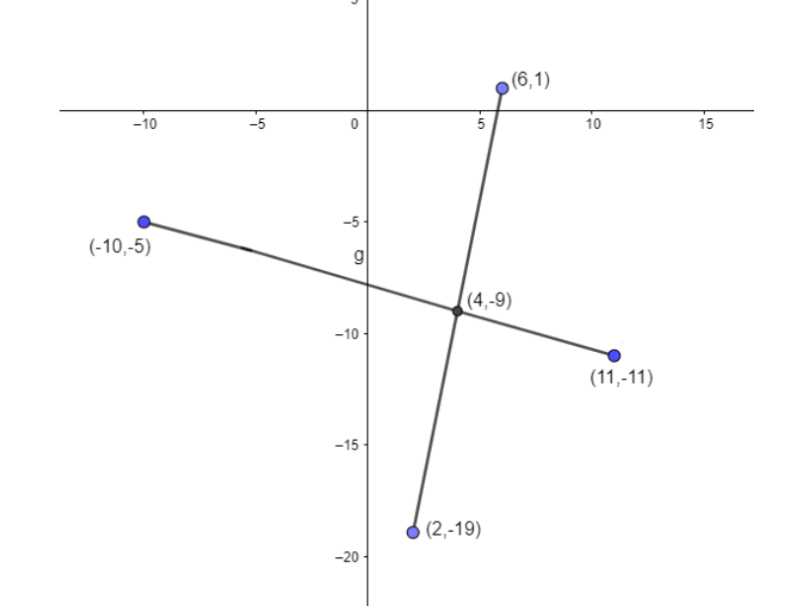
The equation of line, which bisects the line joining two points
A.
B.
C.
D.None of these
Answer
411.6k+ views
Hint: The equation bisects a line which joins two points that at points is the midpoint of the line which joins between two points like
Complete step-by-step answer:
Now, according to the question it is written that required line is bisect to the line AB (given in figure) which joining the two points
That means we have to find the midpoint at which the line passes
To find the midpoint point formula is given by
Here,
After simplifying we get:
Similarly, required line is also perpendicular to line which joining through points
For that, we have to find the slope of the line joining through points
By simplifying further we get:
This slope of line joining through point
Now, we have to find the slope of the required line perpendicular to the line joining through point

To find that we have to apply the formula which is given by
After substituting the value of
After simplifying this we get:
The required equation has a slope
Here,
Substitute the value of
Therefore,
Simplifying this and further solving this we get:
After rearranging the term we get:
This is the required answer
So, the correct option is “option 1”.
So, the correct answer is “Option 1”.
Note: In this particular sum we have to read the question carefully because in that it is written that required line is also perpendicular to line which joining through points
Complete step-by-step answer:
Now, according to the question it is written that required line is bisect to the line AB (given in figure) which joining the two points
That means we have to find the midpoint at which the line passes
To find the midpoint point formula is given by
Here,
After simplifying we get:
Similarly, required line is also perpendicular to line which joining through points
For that, we have to find the slope of the line joining through points
By simplifying further we get:
This slope of line joining through point
Now, we have to find the slope of the required line perpendicular to the line joining through point

To find that we have to apply the formula which is given by
After substituting the value of
After simplifying this we get:
The required equation has a slope
Here,
Substitute the value of
Therefore,
Simplifying this and further solving this we get:
After rearranging the term we get:
This is the required answer
So, the correct option is “option 1”.
So, the correct answer is “Option 1”.
Note: In this particular sum we have to read the question carefully because in that it is written that required line is also perpendicular to line which joining through points
Latest Vedantu courses for you
Grade 9 | CBSE | SCHOOL | English
Vedantu 9 CBSE Pro Course - (2025-26)
School Full course for CBSE students
₹37,300 per year
Recently Updated Pages
Master Class 10 Science: Engaging Questions & Answers for Success

Master Class 10 Social Science: Engaging Questions & Answers for Success

Master Class 10 Maths: Engaging Questions & Answers for Success

Master Class 10 English: Engaging Questions & Answers for Success

Class 10 Question and Answer - Your Ultimate Solutions Guide

Master Class 9 General Knowledge: Engaging Questions & Answers for Success

Trending doubts
State and prove Bernoullis theorem class 11 physics CBSE

1 ton equals to A 100 kg B 1000 kg C 10 kg D 10000 class 11 physics CBSE

State the laws of reflection of light

One Metric ton is equal to kg A 10000 B 1000 C 100 class 11 physics CBSE

Difference Between Prokaryotic Cells and Eukaryotic Cells

1 Quintal is equal to a 110 kg b 10 kg c 100kg d 1000 class 11 physics CBSE




